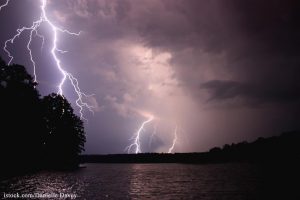The USDA has issued food safety recommendations for citizen affected by a massive storm system that caused severe flooding in the Florida Panhandle and the Alabama Coast. More than 10 inches of rain was dropped by that weather system.
 Pensacola saw between 15 and 20 inches of rain in 24 hours as of Wednesday, April 30, 0214. The flooding is the worst that area has seen in 30 years. As many as 30,000 residents are without power. More rain and wind are expected, and flash flooding is going to be a reality across most of the eastern U.S. from southern New England to the Gulf Coast.
Pensacola saw between 15 and 20 inches of rain in 24 hours as of Wednesday, April 30, 0214. The flooding is the worst that area has seen in 30 years. As many as 30,000 residents are without power. More rain and wind are expected, and flash flooding is going to be a reality across most of the eastern U.S. from southern New England to the Gulf Coast.
Food that has been in a flood needs to be inspected carefully. Unless the food is canned or sealed commercially and the container can be washed in a bleach solution or boiled, it must be discarded. Any food container with screw-on caps, snap lids, pull tops, and crimped caps are not considered flood-proof and should be thrown away. Do not eat food packed in plastic, paper, cardboard, cloth, or similar containers that have been water damaged. Wooden cutting boards, plastic utensils, baby bottle nipples, and pacifiers should also be thrown away if they have come into contact with flood waters.
Power outages can compromise the safety of refrigerated and frozen food. Keep thermometers in your fridge and freezer to monitor the temperature. A safe temperature for the fridge is below 40 degrees F; for the freezer, 0 degrees F. Keep the refrigerator shut; it will keep food cold for 4 hours, but only if the door isn’t opened. A full freezer will hold a safe temperature for 48 hours; 24 hours if the appliance is only half-full.
When the power goes back on, check every food to see if it’s safe. Discard any perishable food, including meat, poultry, seafood, eggs, and leftovers that have been out of refrigeration for more than 2 hours. If frozen food still has ice crystals, it is safe to refreeze. And remember: When in doubt, throw it out.
The government has food safety information via different channels. Ask Karen is available 24 hours a day. YouTube videos can be found at www.youtube.com/USDAFoodSafety, and check Food Safety Public Service Announcements.




